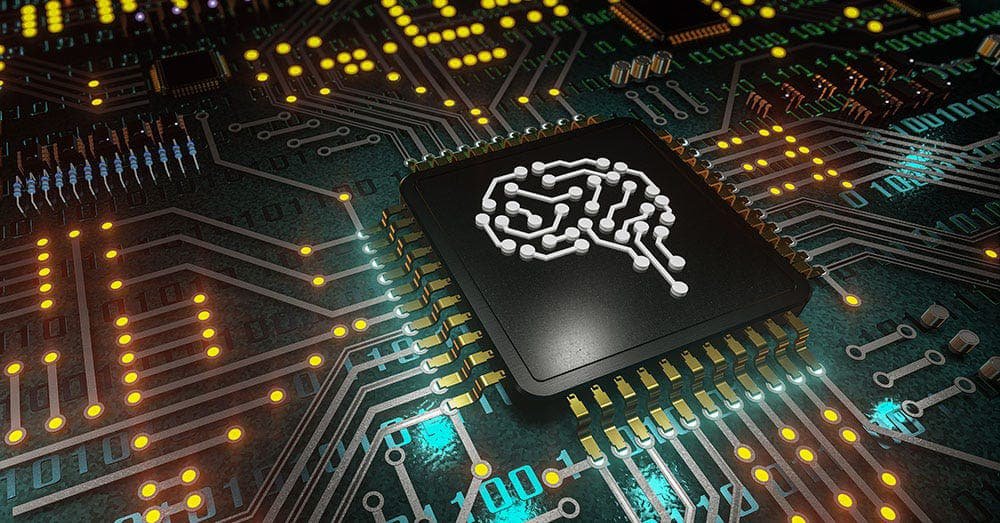
Apple is integrating AI into its chip design process to improve performance, reduce errors, and accelerate innovation.
The influence of artificial intelligence (AI) in the technological world is constantly increasing and now it has knocked in the field of chip design as well. Apple, which is known for its cutting-edge chips. And now is planning to integrate AI in this process. Apple’s senior vice president Johnny Srouji recently told that AI technology can make chip design faster and more efficient. This move will not only increase Apple’s productivity but will also speed up technological innovations in the future. In this detailed analysis, we will delve deeper into how AI is being used by Apple in chip design. And discuss in detail its impact on human mind, society and technology.
Importance of AI in chip design
Chip design is a highly complex and time-consuming process. It involves arranging billions of transistors on a small silicon wafer. And so that they can perform specific tasks. This process is full of challenges for human designers. Which includes the possibility of errors, time constraints and cost pressure. This is where the role of AI becomes important. & Speeding up the design process AI algorithms can analyze huge datasets and evaluate millions of potential designs which is unimaginable for human designers. This can speed up the process several times. Which will reduce the time to bring new chips to market. & Efficiency and optimization AI can figure out the most efficient layouts and architectures to maximize chip performance and minimize power consumption. This can be more accurate and effective than optimization done manually by human designers. & Error reduction Even a small error in chip design can be costly. AI can help identify and fix potential errors at various design stages. And thereby increasing the reliability of the final product. & Automation and productivity AI can automate many repetitive and time-consuming tasks of chip design. Which will allow human designers to focus on more creative and complex problems. This will increase overall productivity.
Apple’s AI chip design strategy
Apple has long been famous for its in-house chip design capabilities. From A-series chips to M-series chips, Apple has made a distinct identity by developing specially designed processors for its devices. Electronic design automation (EDA) software from companies like Cadence and Synopsys will play an important role in this. These companies are integrating AI capabilities into their software, which will make the design process even faster and efficient. Apple believes that generative AI techniques can help get more design work done in less time, which will lead to a huge increase in productivity. This could mean that AI will learn from existing designs and suggest new design options or even develop completely new chip architectures.
Challenges of AI for Chip Design
While AI offers many advantages in chip design, it also poses some challenges
Data quality and availability Vast and high-quality data is required to train AI models. Gathering and processing such datasets for chip design can be a challenge. and Managing complexity The complexity of modern chips is constantly increasing. AI must be able to effectively manage this growing complexity and ensure that the design is reliable and functional. and Substitution or supplementation of human expertise It is a key question whether AI will completely replace human designers or enhance their capabilities. Currently it appears that AI will complement human expertise allowing designers to focus on more valuable tasks. and Certification and verification Chips designed by AI will need to be rigorously certified and verified to ensure that they meet specified performance and reliability standards.
Evolution of human-machine interaction
More intuitive interface AI-designed chips will enable more intuitive and natural human-machine interaction. Voice recognition Natural language processing and gesture controls will become more sophisticated and make communicating with machines as easy as talking to a human. And example An AI-powered smart home system that runs on AI chips. And can understand your tone of voice, your habits and your emotions. It can execute your commands more accurately and automatically adjust the environment according to your needs. And prediction and adaptation Systems running on AI-designed chips will learn from our habits and preferences and anticipate our needs. They will adapt themselves to our behavior making experiences more personalized and efficient.
And example An AI-powered health monitor that has an AI chip. And tracks your sleep patterns heart rate and activity levels. It can analyze your health trends and provide you with personalized health suggestions. Such as when you should rest or when you should exercise more. Emotional intelligence The development of AI can lead us towards creating systems that can understand and respond to human emotions. AI-designed chips will form the basis for these emotionally intelligent AI systems that can revolutionize fields such as medical education and customer service. Example: An AI therapy bot that runs on AI chips can understand your emotional state by analyzing the tone of your voice and your facial expressions. It can provide you with emotional support and guidance. Which can improve access to mental health care.
Neurological and Health Applications
Brain-Computer Interfaces (BCI) AI-designed chips will play a vital role in the development of brain-computer interfaces. And these interfaces can help disabled individuals control devices with their thoughts, communicate, and even regain lost senses. Example: A paralyzed person uses a BCI that runs on AI chips. And this BCI reads the person’s brain waves and converts them into the movement of a robotic arm. and which allows a person to grasp and manipulate objects and Study and treatment of neurodegenerative diseases AI chips can be used in the study and treatment of neurodegenerative diseases such as Alzheimer’s and Parkinson’s disease. and These chips can perform a more detailed analysis of brain activity and help in the development of potential treatments. and examples Neural implants equipped with AI chips can predict and prevent epileptic seizures or stimulate specific areas of the brain to reduce tremors in patients with Parkinson’s disease and Personalized medicine and health monitoring AI-designed chips will lead to the development of personal health monitoring devices that can continuously analyze our body data. This will help doctors create personalized medication plans and detect diseases early.
Ethical and social considerations
Restructuring of employment and skills The widespread use of AI-designed chips may lead to increased automation in some jobs. Which may lead to changes in employment patterns. Human designers and engineers will need to learn new skills and adapt to collaborate with AI. and Data privacy and security AI systems running on AI-designed chips will collect massive amounts of personal data. Ensuring privacy and security of this data will be a major challenge and strong regulatory frameworks will be needed to handle this. and Bias and algorithmic decision making And if AI models are trained on biased data. And then they can make biased decisions. Addressing this challenge will be crucial to make AI systems running on AI-designed chips fair and equitable. and Human freedom and autonomy The growing influence of AI may raise questions about human freedom and autonomy. Should AI systems influence our decisions?




